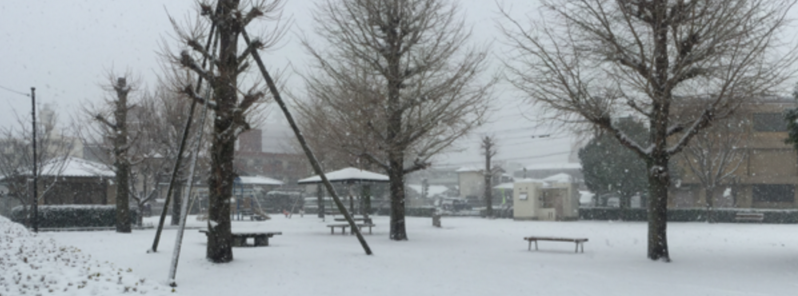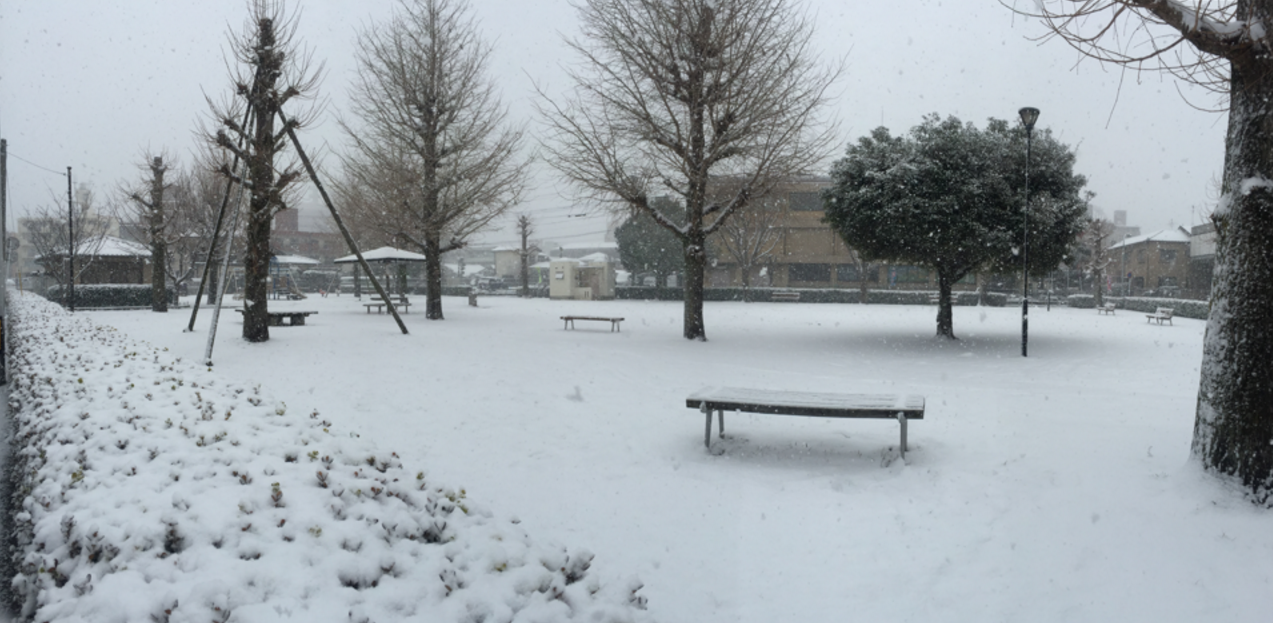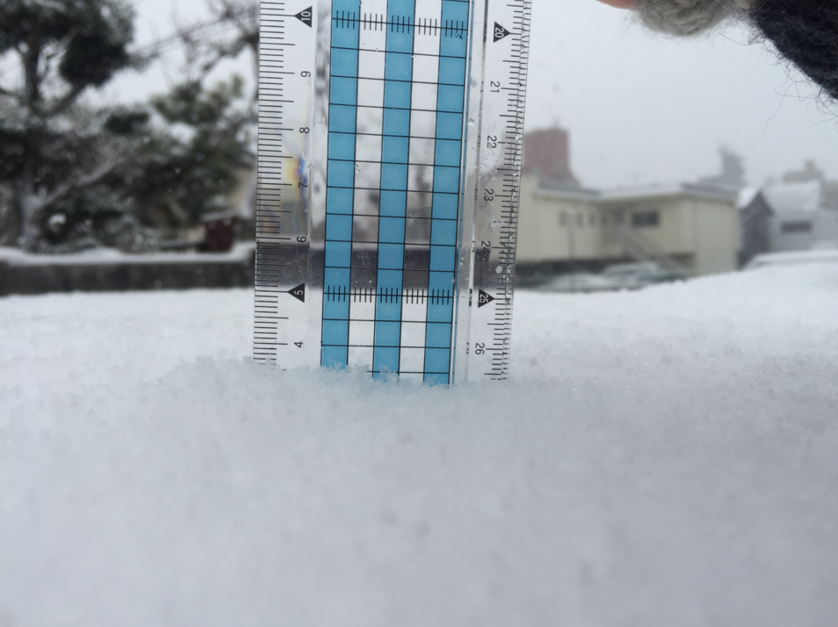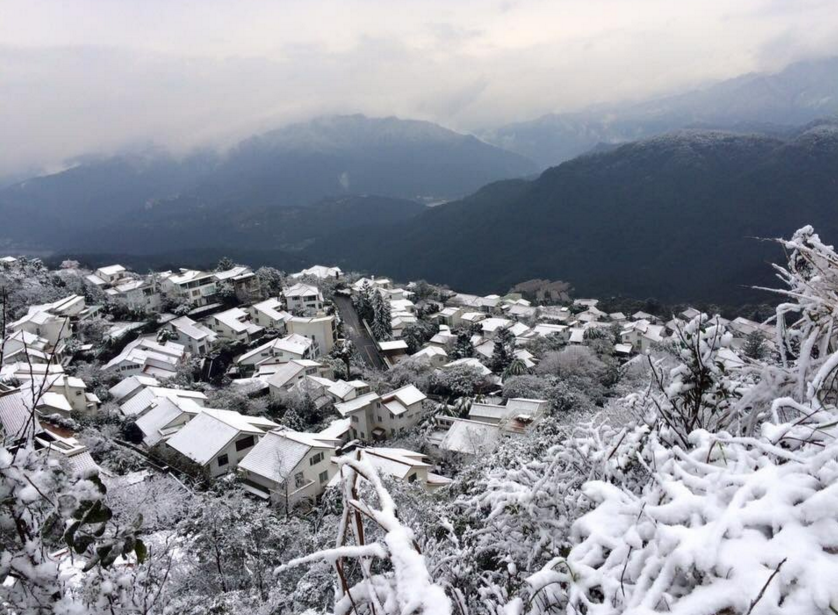Extremely cold air mass brings heavy snowfall to Japan, China and Taiwan

An extremely cold weather system brought chilly temperatures and record amounts of snowfall across parts of China, Taiwan and Japan over the weekend of January 23, 2016. 2 people died and Japan and 85 in Taiwan due to severe weather conditions.
Record-breaking amounts of snow have been reported in western and central Japan. The Amami-Oshima island received its first snowfall since February 12, 1901, and the first measurable snowfall in history was reported in Nago.
The heaviest snowfall was reported in the Chugoku region. The Kita-Hiroshima town in the Hiroshima Prefecture received 142 cm (44 inches) of snow while Suzu in Ishikawa Prefecture reported 59 cm (23 inches). 15 cm (5.9 inches) of snowfall was recorded in Nagasaki, 10 cm (3.9 inches) in Kagoshima and 6 cm (2.3 inches) in Saga.

Snowfall in Japan, January 23, 2016. Image credit: Weather Mizumoto via Twitter

Image credit: Weather Mizumoto via Twitter
Naha reported record low temperature of only 4 °C (39.2 °F) while another record low of 4.2 °C (39.6 °F) was set in the town of Kunigami on January 24 (local time).
Below freezing temperatures persisted in Fukuoka, Kumamoto and other cities in the Kyushu region. -9.4 °C (15 °F) was measured in the Kami town, in Hyogo Prefecture while -5.8 °C (21.6 °F) was recorded at Tottori Airport. Observed temperatures were both the lowest ever recorded in the area.

Video credit: WestPacWx
An outbreak of severe weather caused traffic disruptions and delays across the affected areas. 286 domestic flights were cancelled by the All Nippon Airways and Japan Airlines, according to local media. Two people died and over 100 reported injuries due to weather-related incidents.
In Hong Kong frost and ice buildup have been reported in some parts of the city. Temperatures dropped to 3.1 °C (37.6 °F) which is the lowest they've been since 1957, Robert Speta, the WestPacWx meteorologist, reports.


Snow in Taiwan, January 23, 2016. Image credit: Kyomi via Twitter
The strongest spell of cold weather in the last 10 years was reported on Taiwan on January 23. The Central Weather Bureau issued a special warning about low temperatures, heavy rainfall and strong winds.
Temperatures below 10 °C (50 °F) have been recorded across the affected areas. 11.7 °C (53 °F) was measured in Taipei and 1.3 °C (34.3 °F) was recorded on Yushan. The Taipei City, Taiwan, experienced its first snowfall in the last 80 years. 5 cm (2 inches) of snowfall was reported in Yangmingshan National Park, Taipei.
According to the local forecast, the cold weather conditions are set to continue until January 26.
85 people died due to cold weather conditions in Taiwan.
Meteorologists have forecast additional snowfall until the afternoon of January 25 (local time). Maximum amounts are expected to reach 70 cm (27.5 inches) in Hokuriku, 60 cm (23.5 inches) in the Tohoku region, 50 cm (19.5 inches) in the Kanto-Koshinetsu, Tokai, Kinki and Chugoku regions, 40 cm (15.7 inches) in northern Kyushu, and 20 cm (7.8 inches) in southern Kyushu and Shikoku.
Maximum wind speeds will range between 108 and 126 km/h (67 and 78 mph) across Japan throughout January 25.
In the next couple of days, the temperatures are expected to rise. In Naha, meteorologists expect above the average temperatures between 19 and 24 °C (66.2 and 75.2 °F) due to a low pressure area with tropical air masses pushing north out of southern China. By the next weekend, rainstorms are expected across Japan, and they could potentially trigger floods over the areas already saturated with heavy snowfall.
Featured image: Snowfall in Japan, January 23, 2016. Image credit: Weather Mizumoto via Twitter

Watcher, this is a good watch. South Korea is also on the list. This is a large scale force from xxx to xxx. A few things stand out: Powerful wind; amount of snow; concentration of snow; How far South they have been. Where do they go? They hit the ground. All of them?
When an egg is hot, I blow my breath to it, it helps cool down the egg.
The string of EQs in both Morocco and AK are impressive esp. the former.
People listen to religious science and scientific religions. They are where, when and what they are.
One of my favorites is looking at the pictures on Mars where the sunlight is bright and its atmosphere is stripped away. It helps endure untold buckets of shit, but only to an extent.
Keep an eye on the burnings of sunset oil. GMO labeling was sent to his desk for approval. He turned his head away. It cannot be the end of the story. Otherwise, HE, the ONE, 1 1 1, does not exist and Charles Darwin and the like do not talk out of their asses: mother nature, nature, coincidence, randomness, accidents, statistics, gravity, average, probability, 1+1=2, DNA,, artificial sugar, Moore’s Law, Periodical Table of Elements….
25-26 37 34
5 5 5